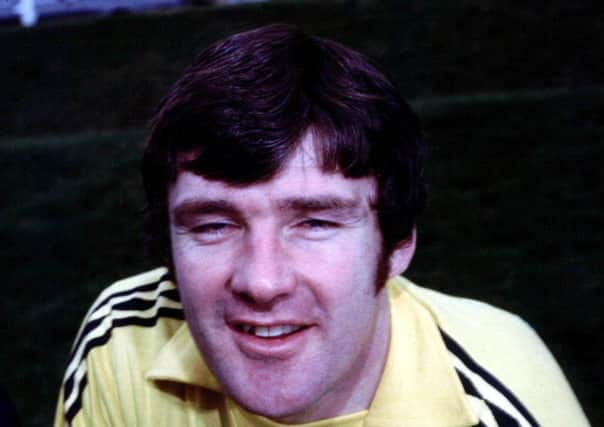Make Hampden a place which celebrates its history, says Bobby Clark


The 17-times capped keeper, who started his career at Queen’s Park before starring for Aberdeen in the 1960s and 70s, has just ended a 17-year coaching career at the prestigious University of Notre Dame in Indiana and wants the SFA to build a venue as strong as that of the “Fighting Irish”.
The 72-year-old, who has also coached in Zimbabwe and managed the New Zealand national side, wants to ensure that both the history of 115-year-old Hampden, and its potential, are paramount when the SFA decide on the future home of Scottish football at a crunch meeting next week.
Advertisement
Hide AdAdvertisement
Hide AdThe SFA currently rents Hampden from owners Queen’s Park but the lease expires in 2020 and the Scottish Rugby Union is pitching strongly for Edinburgh’s Murrayfield to host international matches and high- profile cup game.
The SFA would like to own Hampden but a price has not been agreed with Queen’s Park and Clark reckons that moving to Murrayfield – potentially killing off Queen’s in the process – would be a huge mistake.
He said: “We cannot let Hampden or Queen’s Park disappear. Think big!
“Notre Dame University is one of the most storied American universities and much of this is due to their American football team.
“In everything they do they celebrate their history.”
“They have recently added a $400 million extension to their stadium with corporate boxes,a fitness gym, ballroom, pubs, restaurants, classrooms and lecture theatres. Every one is full of Notre Dame history.”
“It is used every day by students, athletes, professors, alumni and businesses. Hampden should be the same. It should be used not just as a football stadium but somewhere that celebrates, not just football, but Scottish life and history.”
Clark, right, added: “Queen’s Park and Hampden are huge parts of Scottish football history. It is important that we hold on to our history, cherish it, and build on it. Queen’s Park is where Scottish football began and it is very important that we find a solution so that they can continue.”
Clark added: “I have seen highs and lows at Hampden. I was at the 1960 European Cup final between Real Madrid and Eintracht Frankfurt. I had a science exam the next day and I had to promise my mother that I would take my science book with me to read on the bus. I remember more about that fantastic game than I do of science.
Advertisement
Hide AdAdvertisement
Hide Ad“The first time I played there was for the Queen’s Park Strollers in 1962 and I made my Scotland debut against Wales in 1967. We won 3-2 with Alan Gilzean scoring twice and Ronnie McKinnon also scoring. That was Jim Baxter’s last international and I was excited to be in the same team as him.”
That same year also brought disappointment as Clark added: “Aberdeen played Celtic in front of 126,000 fans in the Scottish Cup final. I was a part-timer studying to be a PE teacher, so I travelled to the game by train from Shettleston. The team did not arrive until 2:30 and our manager Eddie Turnbull was not with them after falling ill. We lost 2-0. We met in the final again in 1970. This time Eddie was with us and the result was very different.”
Clark was the man of the match when Aberdeen, underAlly MacLeod, won the League Cup in 1976 and in 1978 and he headed to the World Cup in Argentina after a parade at Hampden. “Ally had whipped the country into a frenzy,” said Clark, “but that event was not something I particularly enjoyed.
“Hampden is a special place and there is an opportunity to turn it into even more of a special place.”